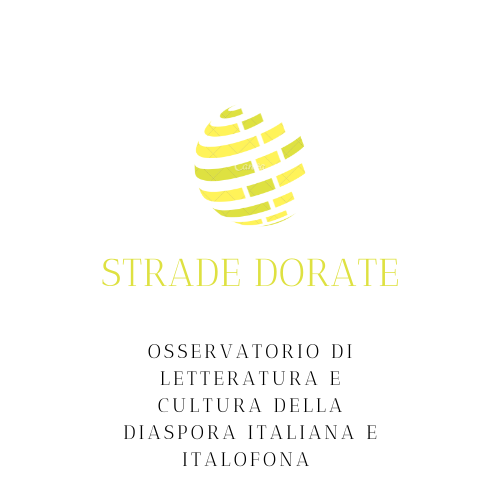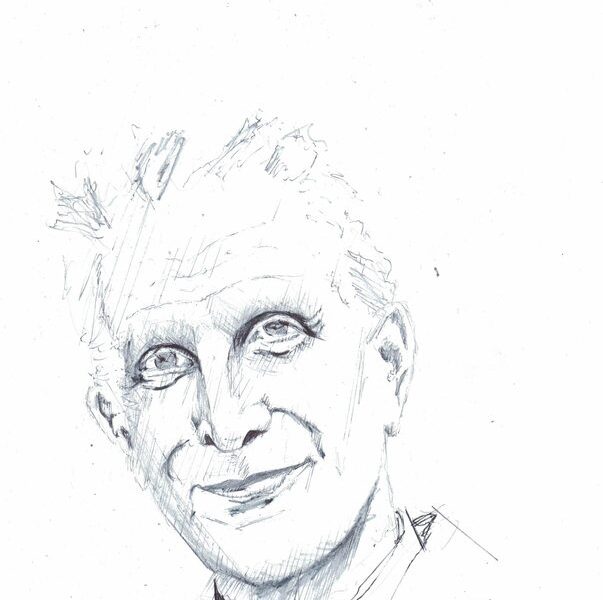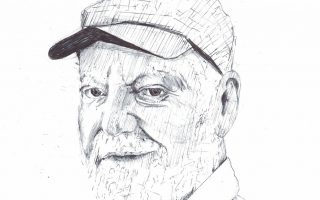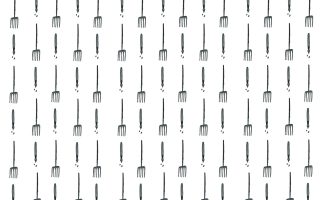by ILARIA SERRA ( translated by CALLI ABISOGNIO )
Just when we were preparing to write about him, Anthony Riccio left us. He left us at just 69 years old, all of a sudden and without a fuss, which was just his style. Anthony had become a photographer as a child, developing photographic negatives in his house’s bathroom in New Haven, Connecticut. For his whole life, he worked as a librarian at Yale University’s Sterling Memorial Library, where he took care of the special collections and guided tours of the historical buildings during his free time. He always loved the past, but he loved people more than objects.
Anthony Riccio’s photographs are many embraces to old emigrants and to the bygone generations of Italian America. When you look at them, you can perceive the affection of the photographer. When you heard him speak, you had the confirmation of it: Riccio searched for the humanity in his subjects. He got to know them, he listened to them, he valued them for what they were. When he walked on the streets, he would stop to get to know the people he photographed. He would speak to you so he could become your friend. Riccio loved photography, but he loved those whom he photographed even more. He conquered the mostly Italian American audience at Florida Atlantic University’s “Italy in Transit” symposium in 2020 with his presentation, because the audience felt valued and regarded with affection by way of his photographs.
He was very talented in his research work as an oral historian and street photographer. He knew how to capture minor stories. He had the patience to listen to the stories of the elderly and the curiosity to document life in Italian villages and in the northeast’s Little Italy’s. His three books are centered on the lives of people: the voices and faces of the Italian Americans in New Haven, his birth city, in The Italian American Experience in New Haven: Images and Oral Histories (2006); the stories of woman workers in Farms, Factories, and Families: Italian American Women of Connecticut (2014), and life in Boston’s Italian neighborhood in Boston’s North End: Images and Recollections of an Italian-American Neighborhood (2017). This last one was written when was hired by a governmental agency in support of the lower classes in the 70s. He dedicated the book to “the people in Boston’s North End who welcomed me into their homes and who entrusted me with their wisdom.” The fourth book is about to be released, posthumously, under the title Stories, Streets, and Saints. In it,he will yet again unite oral stories with photographic captures that detail minework, patronal festivities, recipes, and ancient prayers.
Some weeks ago, I had asked Anthony to choose a shot to publish on Strade Dorate, a shot that would define him. He chose “My Daily Prayer”, taken in Pisticci, Basilicata in 1975.

To him, it seemed like the photo that most captured “the decisive moment” defined by Cartier-Bresson, the “moment of humanity” contained in an image. This photo’s story starts a long time ago but arrives to today. “The story is very nice. In 1975, after a year of studies in Florence, I decided to do a Grand Tour of Italy instead of returning home. With a Europass, I took trains, I got off at many small villages, and then I walked, working as a street photographer, photographing daily life. On that day, I found myself in Pisticci and there was this elderly woman sitting there reading her little book and praying in a state of peace that touched me. I didn’t want to disturb her, but her next-door neighbor told me ‘Take the photo, c’mon, c’mon. She does this every day at the same time.’ With this encouragement, I took two photos, one in black-and-white and one in color (I always took two cameras). She never moved and she didn’t even notice me because she was completely immersed in her prayer. Like all the elderly in Pisticci, she wore the typical clothing.”
But what did Anthony see in this woman? Much more than an old lady crouched down on her doorstep. “That photo represents not only an ancient culture, but a way of life that is now lost, unknown, and forgotten. On that face you see a sense of piety. A portrait is a visual biography. Her look reflects hope, wisdom, gentleness, and a person who worked a lot in life. Her face enchanted me for years, but I did not know her and I didn’t know the story of her life. I had to imagine it and guess it based on her expression, the wrinkles on her forehead and her face undone by pain.”
But the story does not end here, thanks to Anthony’s genuine curiosity. Shortly after telling me this story, Anthony posted the photo to a site dedicated to the village of Pisticci. To his surprise, “the reaction was incredible! Everyone knew this elderly woman and they wrote to me stories upon stories about her. After 46 years, the mystery was resolved! Now, the photograph is no longer titled ‘My Daily Prayer.’ Her name was Grazia (Pece) Lazazzera, born September 9, 1900 and deceased August 23, 1982. She was 75 years old when I took the photo. She lived a life full of sacrifices and grave pains: she lost nine children, two of them under twenty years old. When her husband returned from World War I, he was destroyed, and she continued to work as a baker to sustain the family. Many told me that she was loved by the village and they called her Aunt Grazia. She was also known as ‘a tranciesa, a nickname derived from the trancio that she used to separate the bread dough. She was talkative and used old sayings and jokes of Pisticci. Now I understand why there were white spots on her apron: it was flour!”
The story of this photograph reflects Anthony Riccio’s sensibility, his love for Italian American people and culture, and his reverence for the elderly and for their memories. And who knows, maybe Mrs. Grazia made herself known to Anthony a few days before his death so that she could welcome him as a friend.
On the cover : illustration by Massimo Carulli




